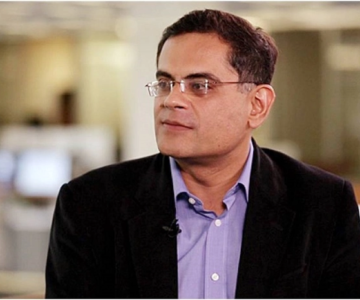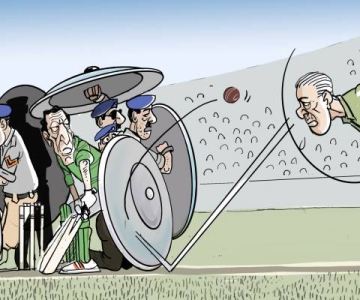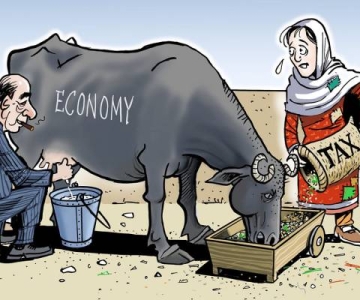A lovely review of my book in the Daily Times by Ishtiaq Ahmed
When Indians and Pakistanis visit each other, questions of identity, patriotism, and self-esteem almost invariably crop up in even the most enlightened circles. That for more than a thousand years Indian-Muslims were a hyphenated community among many others such as caste Hindus, Sikhs, Christians, Dalits, and all of them together were described generically even as Hindus by foreigners, is often forgotten.
Delhi by Heart is a jolly good, multifaceted account penned by Raza Rumi of Lahore of his sojourns in the Indian capital, Delhi, over many years. He puts his experiences in perspective by drawing attention to indoctrination at school and in higher educational institutions in Pakistan, which aims at inculcating the belief that India and Indians are mortal enemies. He makes this admission without mincing words: “I grew up and lived in a milieu that conditioned me to resent India, especially its role in dismembering the Pakistani state in 1971. I also lived in the semi-schizophrenic state of being part of the ‘enemy’ landscape”.
However, cultural references, historical threads and many other bonds from a shared heritage were far too strong. As happens ever so often in this globalised word, people are on the move more and more. Rumi met Indians when he was studying abroad and later interacted with them at the Asian Development Bank and then as part of the UN peacekeeping mission in Kosovo. Such experiences helped him discard the crass prejudices he had imbibed during socialisation at school and college.
More importantly, in Rumi’s evolution as an intellectual and opinion-builder (the author is a noted media personality) the wisdom and teaching of the Sufis (perhaps from a reading of Jalaluddin Rumi) seems to have held a great attraction for him. Consequently, one can note that he dips his pen in the red ink of a shared, wounded humanity, notwithstanding the contradictions, conflicts and temptations that simultaneously permeate individual and collective existence. His book on Delhi is suffused with cosmopolitanism deriving from Sufistic syncretism and secular humanism.
We learn that the author’s family hails from the rather large community of Punjabi sheikhs whose ancestors were Hindu traders and businessmen some centuries ago. His particular branch of sheikhs was on the way to Benares for a pilgrimage when they met a Sufi, Shah Shams Sabzwari, who worked a miracle and converted them to Islam. I have heard this legend in different versions from several clans of the Punjabi sheikhs, including the well-known Punjabi Saudagaraan of Delhi.
One of them, Sadia Dehlvi, belonging to the prominent publishers of the Urdu-language film magazine, Shama, meets him at the shrine of Hazat Nizamuddin Aulia, the patron-saint of Delhi, where for hundreds of years men and women of all faiths have congregated as a peaceful fraternity, a sort of counterfactual to the dogmatism of Islam, Hinduism and other religions and the concomitant politics of clashing nationalisms. A great deal of the narrative revolves around the abiding charm of that shrine for people from all walks of lives.
Delhi, a city whose origins are shrouded in the mists of pre-history and mythology, is understandably an attractive medium to weave together a narrative about the rise and fall of dynasties and of variegated cultural and ethnic mosaics making up the Delhi population. Khushwant Singh and William Dalrymple are the most prominent in a long list of storytellers of Delhi’s charms and surprises. Rumi acquits himself very well as an addition to that list.
Rumi and Dehlvi visit many localities and historical places together, especially those associated with a vibrant Muslim presence before the 1947 partition. It declined radically afterwards. Inevitably, similar events in his native Lahore in 1947 become a part of the story he wants to tell. His paternal grandmother, Bibiji, but especially her elder sister Apa were witnesses to the infamous burning down of the Hindu locality of Shahalmi Gate in the Walled City of Lahore in the summer of 1947. In my book, The Punjab Bloodied, Partitioned and Cleansed, I have presented the whole story of how the plot to set Shahalmi ablaze was hatched, even obtaining a confession from a key figure involved in that conspiracy. Talk to any Hindu or Sikh of Lahore and he would pour out his heart about the burning of Shahalmi, but from Rumi’s book we learn that the tragedy left scars and painful memories even with some Muslims of Shahalmi. Ironically, the Hindus and Sikhs were physically eliminated from Shahalmi but could not be expelled from the memory of their Muslim friends. This is true of millions of Punjabis on both sides of the divide.
The book presents multifarious anecdotes and experiences of the author, including his meetings with Khushwant Singh and Pran Neville and some others with a Lahore connection. He even dares to contrast Jinnah’s two-nation theory with Abul Kalam Azad’s warnings that the partition of India would be the partition of the Indian Muslim community. Of course, we are reminded that Jinnah was at heart a true liberal who wanted equal rights for all citizens once he got Pakistan on the basis that Hindus and Muslims could not live in peace together as one nation. The author is able to combine history, politics, religion, ethnography and biography with rumour, gossip, myths and revisionist history to produce a very informative and entertaining book on Delhi.
However, the book can easily be allegorically a tale in the tradition of Plato’s Allegory of the Cave, which the Greek philosopher constructed to haul up a chained humanity from the pits of ignorance and deception into the world of light and truth. The core message Rumi conveys in most delightful prose is that it is time to move on beyond the legacy of a painful partition. The book should be essential reading for all those interested in understanding the predicaments of Pakistani intellectualism.



